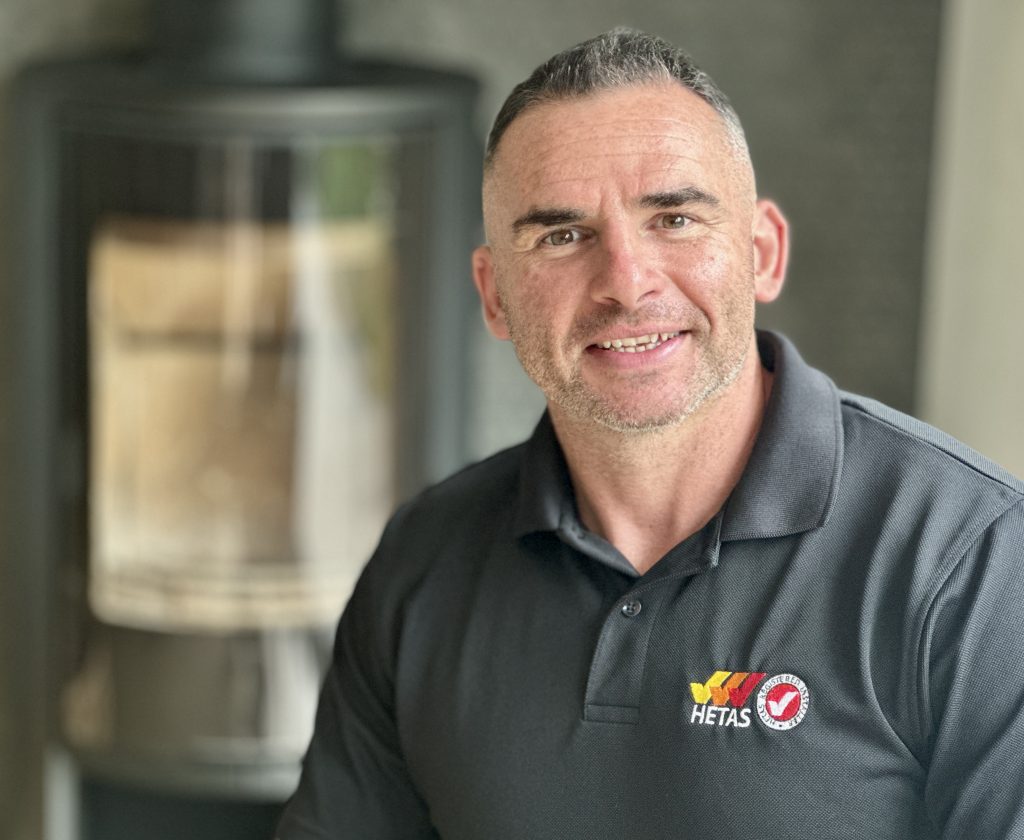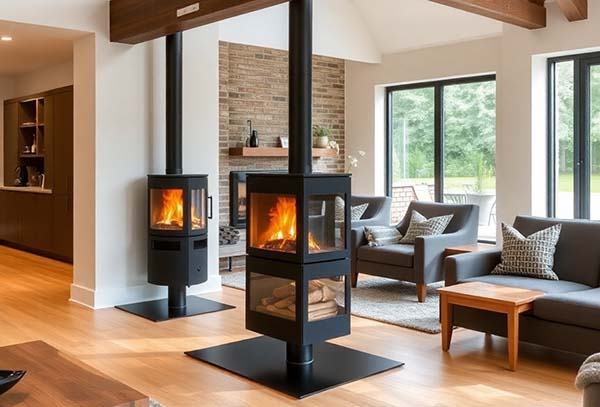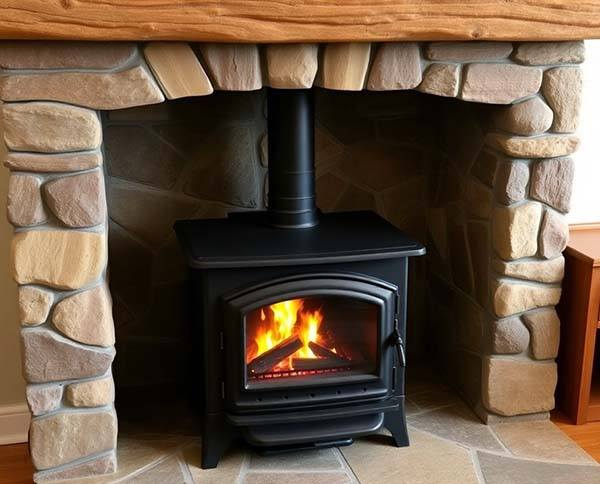By Wes Dodd – WD Wood Burner Installations, Poole, Bournemouth & Dorset
Choosing the right size wood burner for your home is one of the most important decisions you’ll make. Too small, and your stove will struggle to heat the room. Too large, and it’ll overheat the space and burn fuel inefficiently.
As a HETAS-approved installer based in Poole and working across Bournemouth and Dorset, I often help customers find the perfect balance of warmth, comfort, and performance. In this guide, I’ll explain how to calculate the ideal stove size for your room and what else to consider before buying.
Why Getting the Right Size Matters
A correctly sized stove will:
- Heat your room efficiently and evenly.
- Burn wood cleanly, producing less smoke and soot.
- Save you money on logs by avoiding wasted heat.
- Keep your glass cleaner and your flue healthier.
An oversized stove can quickly overheat the room, forcing you to run it at a low smoulder – which is bad for both the stove and the environment.
How to Calculate the Right Stove Size
A simple rule of thumb is to calculate your room’s cubic volume and divide it by 14 to estimate the kilowatt (kW) output you need.
Step 1 – Measure Your Room
Measure your room’s length, width, and height (in metres) and multiply them together:
Room volume = length × width × height
For example:
A room that’s 5m long × 4m wide × 2.4m high =
5 × 4 × 2.4 = 48 cubic metres
Step 2 – Divide by 14
Now divide the total by 14 to find the approximate heat output in kilowatts (kW):
48 ÷ 14 = 3.4kW
So, a 3–4kW stove would be a good starting point for this room size.
Step 3 – Adjust for Insulation and Room Type
| Room Type / Insulation Level | Adjusted Output Needed |
|---|---|
| Modern, well-insulated home | Subtract 10–20% (less heat required) |
| Older home with average insulation | Use the calculated figure |
| Large, open-plan or poorly insulated room | Add 10–30% (more heat required) |
💡 Tip from Wes: “If your home is new or very well insulated, you’ll likely need a smaller stove than you think. Running a smaller stove hotter and cleaner is far better than running a big one too low.”
Typical Stove Size Guide
| Room Size (m³) | Approx. Room Type | Recommended Stove Output |
|---|---|---|
| Up to 40 m³ | Small room / snug | 3–4 kW |
| 40–60 m³ | Medium living room | 4–5 kW |
| 60–80 m³ | Larger living room | 5–6 kW |
| 80–100 m³ | Open-plan or large room | 6–8 kW |
| 100 m³+ | Very large / open space | 8–12 kW |
Other Factors to Consider
1. Insulation & Airflow
Newer homes are usually well insulated and may need a smaller stove. Older cottages or draughtier rooms may require a higher output to feel comfortable.
2. Ceiling Height
High ceilings increase the cubic volume of a room, meaning more heat is needed. Always factor height into your calculation.
3. Open Plan vs Closed Rooms
Open-plan layouts (common in modern extensions) allow heat to escape quickly. You may need a slightly larger stove or consider a twin installation for multiple zones.
4. Air Supply
All modern stoves need a good air supply to burn cleanly. In newer, airtight homes, you may need an external air kit to feed fresh air directly to the stove.
5. Future Upgrades
If you’re planning to open up adjoining rooms or install bifold doors, tell your installer. A professional can help future-proof your installation choice.
What If You Choose the Wrong Size?
- Too small: You’ll run the stove flat out, overworking it and wasting wood.
- Too large: You’ll be tempted to keep it on low – leading to soot build-up, dirty glass, and creosote in the flue.
That’s why professional advice is crucial before buying.
Ask Wes – Your Local Expert in Poole & Dorset
As a HETAS-registered engineer, I always carry out a detailed site survey before any installation. This includes:
- Measuring your room and flue setup.
- Checking insulation and ventilation.
- Recommending the perfect stove size and type for your home.
💬 “It’s not just about how powerful the stove is – it’s about matching the right appliance to your home’s unique needs. A properly sized stove means more comfort, less maintenance, and lower running costs.” – Wes Dodd, WD Wood Burner Installations
Final Thoughts
Choosing the right size wood burner is key to efficiency, comfort, and long-term satisfaction. By following the calculation above and getting professional advice, you’ll end up with a stove that looks great and performs perfectly for your space.
As your local wood burner specialist in Poole, Bournemouth, Christchurch, Wimborne, Swanage, Wareham, and Corfe Mullen, I can help you choose and install the ideal stove for your home.
👉 Contact WD Wood Burner Installations today for a free survey, expert advice, and HETAS-approved installations across Dorset.




